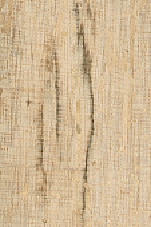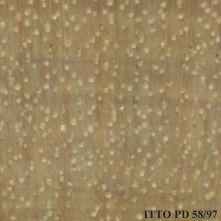
KEDONDONG (Canarium littorale)
Trade Name
Kedondong
Scientific Name
Canarium littorale Blume
Family
BURSERACEAE
Common Names
Damar kahingai (Brunei Darussalam); Jelemu nanking (Brunei Darussalam); Ki kanari (Indonesia); Kedondong gergaji (Malaysia); Kedondong puteh (Malaysia); Kedondong bulan (Malaysia); Kawangan (Brunei Darussalam); Deluwak (Indonesia)
Scientific Name Synonyms
Canarium tomentosum Blume; Canarium rufum Benn.; Canarium purpurascens Benn.
Description Of The Tree
Botanical Description
It is a medium-sized to large tree up to 45 m tall. The bole is branchless for up to 21 m, up to 100 cm in diameter, sometimes with short buttresses.
Natural Habitat
Canarium littorale is common in well drained to swampy locations. It usually grows in lowland forests up to 1,100 m of altitude.
Natural Distribution
It is distributed in Indo-China to peninsular Malaysia, Sumatra, Java, Borneo. In Sabah it is widespread in East and West Coast.
Non Timber Uses
Brittle heart present in this species might affect wood processing.
Wood Identification
Anatomic Description Of Wood
Wood diffuse porous. Occasionally tyloses common. Vessels per mm2 5 to 20. Vessel-ray pits reticulate and/or foraminate. Simple perforation plates. Intervessel pits medium, 7 to 10 micras. Apotracheal axial parenchyma diffuse and/or diffuse in aggregates. Occasionally paratracheal axial parenchyma scanty and/or vasicentric. Prismatic crystals in chambered axial parenchyma cells and/or in fibers. 4 to 10 rays per mm (medium). Silica bodies in the ray cells. Prismatic crystals in radial alignment in procumbent ray cells (chambered cells). Body ray cells procumbent with one row of upright and/or square marginal cells (Kribs-III). Septate fibers present. Fibers with simple to minutely bordered pits.
-
 Wood Macro Photo Radial Plane
Wood Macro Photo Radial Plane
-
 Wood Micro Photo Of Transversal Section
Wood Micro Photo Of Transversal Section
Availability
Cites Status
Unrestricted
General Wood Description
Odor
It has no distinctive odor or taste.
Color
The heartwood is nearly white or buff-colored to pale pinkish-brown or reddish-brown. The sapwood is paler and often not clearly demarcated from the heartwood.
COLOR INDEX (1=Black, 7=Light yellow,white)
6
Grain
The grain is rather straight to shallowly interlocked.
Texture
The texture varies from fine to moderately coarse.
Luster
The planed surfaces are lustrous.
Natural Durability
The wood is non-durable in exposed conditions or in contact with the ground. It is readily attacked by fungi and termites, and blue staining can be a serious problem.
Natural durability index (1= Very high durability, 7=Vey low durability)
5
Silica Content
Silica Content: Silica contents up to 1.7% have been reported in this species. Silica Value: 0
Resistance To Impregnation
The heartwood is resistant to preservative treatment, but the sapwood is permeable.
Wood Physical Properties
Basic Density or Specific Gravity (O.D. weight/vol. green) (g/cm³)
0.65
Air-dry Density (Weight and volume at 12%MC) (g/cm³)
0.72
Total shrinkage Tangential (Saturated to 0%MC) (%)
6.6
Total shrinkage Radial (Saturated to 0%MC) (%)
5.1
Drying Defects
Ease of Drying: Shrinkage during seasoning is moderate to very high especially in tangential direction.
Recommended Dry Kiln Schedule
JP-25; UK-J; US-T10-D4S
Dimensional stability ratio (Total Tangential Shrinkage %/Total Radial Shrinkage %)
1.3
Wood Chemical Properties
Wood Mechanical Properties
Bending Strength (MOR),12%MC (kgf/cm²)
825
Stiffness (MOE) 12%MC (kgf/cm²)
131451
Compression parallel to fiber 12%MC (kgf/cm²)
438
Workability
Sawing
Cutting behavior is reported to be easy to fair.
Rotary Veneer Cutting
Brittle heart may cause some problems during peeling.
Sliced Veneer
Brittle heart may cause some problems during peeling.
Blunting Effect
Wood of this species exerts a severe blunting effect on the cutting tools.
Machining
Interlocked grain may affect machining operations.
Planing
Planing operations are reported to be easy to fair.
Boring
Boring of this species is reported to be easy.
Nailing
This species has good nailing properties.
Gluing
This species is easy to glue.
Finishing
Wood of this species is easy to finish.
REFERENCED USES
End Uses Summary
HOUSING GENERAL, boards, flooring, frames, FURNITURE AND CABINETS, PLYWOOD AND VENEER, TOOLS, tool handles, PACKING, NAVAL CONSTRUCTION, OTHER AND MUSICAL INSTRUMENTS, moldings
General Housing
- 10 - Silica in Timbers
Boards
- 13 - Dry kiln schedules for commercial woods. Temperate and tropical. Section III. Latin American (Mexico, Central, and South America) Woods–Conventional Temperatures
Flooring
- 14 - Handbook of Hardwoods
Frames
- 16 - Woods of the World
Furniture Cabinets
- 21 - Tropical timbers of the world. Part III-Southeast Asian and Oceanian Species.
Panels, Veneers
- 25 - Directory of Timber Trade Malaysia
Tools
- 42 - Utilización Industrial de Nuevas Especies Forestales en el Perú.
Tool Handles
- 43 - Maderas de Bolivia (Características y Usos de 55 Maderas Tropicales)
Packing
- 45 - Recopilación y Análisis de Estudios Tecnológicos de Maderas Peruanas
Shipbuilding
- 55 - Tropical Timber Atlas of Latin America
Molding
- 79 - Padronização da Nomenclatura Comercial Brasileira das Madeiras Tropicais Amazônicas, Sugestão
Please Provide Information To View Producer Information